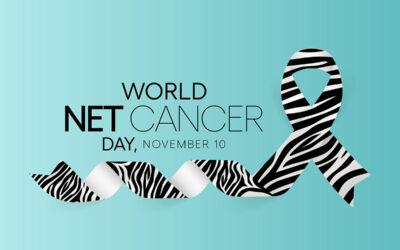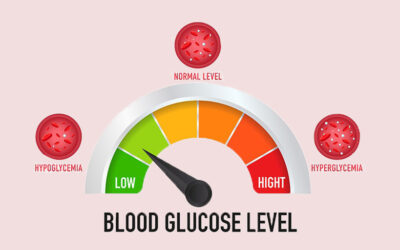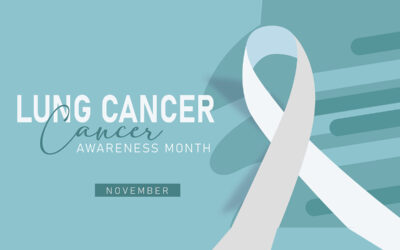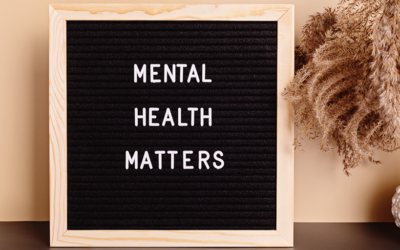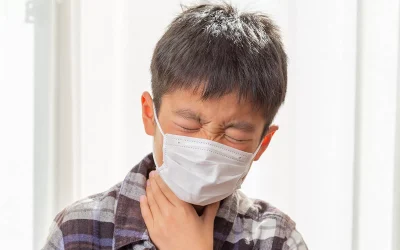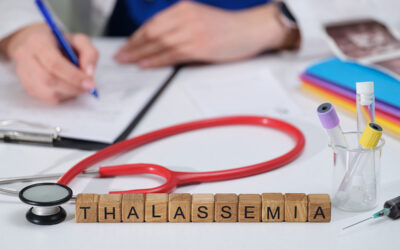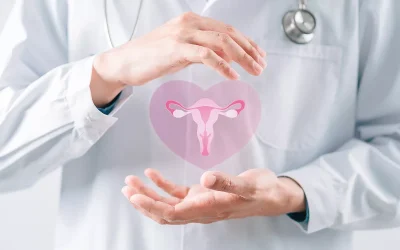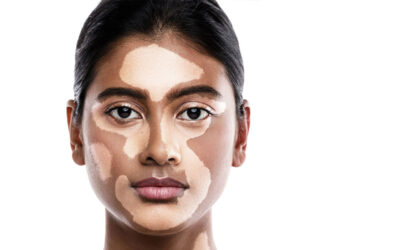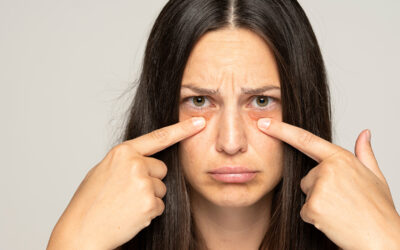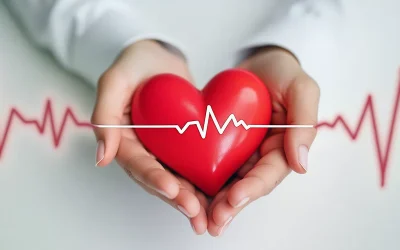Understanding Chickenpox: Early Signs, Treatment Options, and Recovery Tips
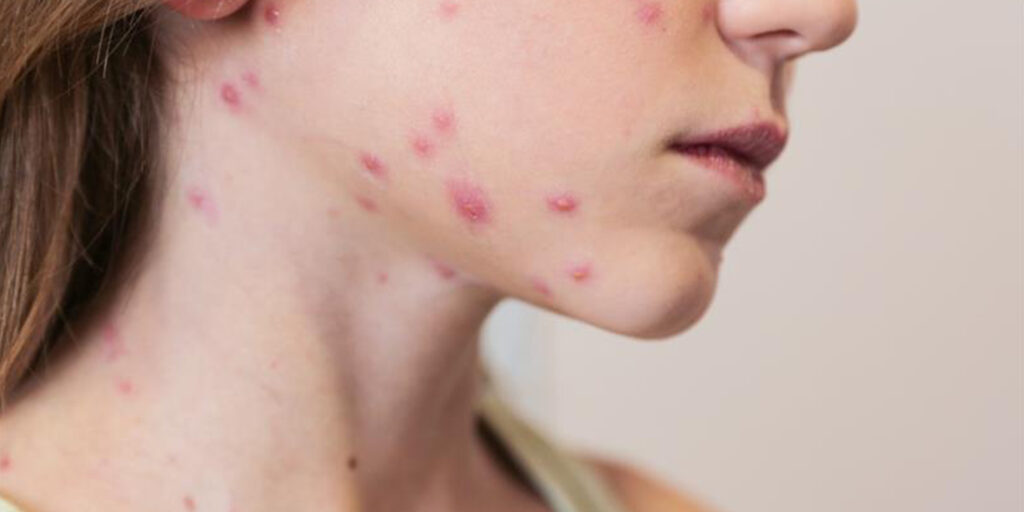
Chickenpox was once a widespread childhood illness, but thanks to vaccination; its cases have declined over the years. The chickenpox infection spreads easily and causes an itchy rash along with flu-like symptoms. Most people recover without complications, though adults and those with weakened immune systems may experience more severe symptoms. In this blog, we will talk about all you need to know about chickenpox, including its signs, treatment, and tips to help with the recovery. Whether you’re dealing with it for the first time or just want to be prepared, this guide has got you covered. Let’s dive in.
Table of Contents
ToggleWhat is Chickenpox?
Chickenpox is a common viral infection caused by the varicella-zoster virus. It’s most well-known for its itchy, red rash that turns into fluid-filled blisters, but it often starts with milder symptoms like fever and tiredness. The infection spreads easily through tiny droplets in the air when an infected person coughs or sneezes, or through direct contact with the fluid from the blisters.
Once exposed, it can take between 10 to 21 days for symptoms to show up. The infected person develops communicability some 1 to 2 days before rash development and remains contagious until all the blisters have crusted over. A vaccinated person is considered contagious till 24 hours after no rash appears (In vaccinated individuals rashes may not crust). While it’s often thought of as a childhood illness, chickenpox can affect adults too, and it can be more severe in older age groups or those with weakened immune systems.
What are the Stages of Chickenpox?
Chickenpox typically progresses through three distinct stages, each with its own set of symptoms. Understanding these stages can help in recognising the infection and managing it effectively.
1. The Early Stage
- Before the rash appears, mild symptoms like fever, headache, tiredness, and loss of appetite often show up.
- These symptoms can feel similar to a common cold or flu, making it easy to overlook chickenpox at first.
2. The Rash Stage
- A red, itchy rash usually develops 1 to 2 days after the initial symptoms.
- The rash often starts on the face, chest, or back before spreading to the rest of the body, including the scalp, arms, and legs.
- Over the next few days, the rash turns into small, fluid-filled blisters that are intensely itchy.
3. The Healing Stage
- After a few days, the blisters begin to dry out and form scabs.
- Scabbing usually starts within a week, and the scabs gradually fall off on their own.
- It’s important not to scratch or pick at the scabs, as this can lead to scarring or infections.
The entire process, from the first symptoms to the disappearance of the scabs, usually takes about 1 to 2 weeks. In the next section, we’ll take a closer look at the signs and symptoms to help you recognise chickenpox early.
What are the Signs of Chickenpox?
Chickenpox has a distinct set of symptoms that make it easier to identify. The rash is the most noticeable sign, but there are other signs to watch out for:
- Fever – Often mild but can be higher in severe cases.
- Fatigue and weakness – A general feeling of being unwell.
- Loss of appetite – Decreased interest in food.
- Headache – Can occur before or during the rash outbreak.
- Itchy rash – The most noticeable sign, progressing through three stages:
- Small red spots (macules).
- Fluid-filled blisters (vesicles).
- Scabs that form as blisters dry out.
Symptoms tend to be mild in children but may be more severe in adults and those with weakened immune systems.
How is Chickenpox Diagnosed?
Chickenpox is usually diagnosed based on its distinctive symptoms, particularly the characteristic rash. In most cases, a doctor can identify the infection by examining the rash and asking about other symptoms, such as fever or itching. Here’s how the diagnosis typically works:
Physical Examination
The doctor will look for the telltale signs of chickenpox, such as the red spots, fluid-filled blisters, and scabs in various stages of healing. They may also check for other symptoms like fever or fatigue to confirm the diagnosis.
Medical History
The doctor might ask about recent exposure to someone with chickenpox, as the infection is highly contagious. They may also inquire about vaccination history, as those who have been vaccinated are less likely to contract the virus.
Lab Tests (Rarely Needed)
In unusual or complicated cases, such as when the rash looks atypical or the patient has a weakened immune system, the doctor may order lab tests. These tests can include blood work or a sample taken from the blisters to confirm the presence of the varicella-zoster virus.
For most people, a physical examination and medical history are enough to diagnose chickenpox. Once confirmed, the focus shifts to managing symptoms and preventing the spread of the infection.
How is Chickenpox Treated?
Chickenpox is usually a mild illness that resolves on its own, but treatment can help relieve symptoms, prevent complications, and speed up recovery. Most people recover fully within one to two weeks, but those at higher risk, such as adults, pregnant women, and individuals with weakened immune systems, may need additional medical care.
Home Care and Symptom Relief
For mild cases, treatment focuses on managing symptoms and keeping the patient comfortable:
Relieving Itching and Skin Irritation
- Cool Baths – Taking lukewarm baths with baking soda, colloidal oatmeal, or uncooked oats in a cloth bag can soothe the skin.
- Calamine Lotion – Applying calamine lotion to the affected areas can help reduce itching.
- Loose, Comfortable Clothing – Wearing soft, breathable fabrics prevents further skin irritation.
- Cold Compresses – Gently dabbing itchy areas with a cool, damp cloth can provide relief.
Managing Fever and Discomfort
- Paracetamol- Helps reduce fever and relieve mild pain.
- Avoid Aspirin – Aspirin and ibuprofen should not be used in chickenpox, as aspirin increases the risk of Reye’s syndrome, a rare but serious condition.
Preventing Scratching and Skin Infections
- Keep Nails Short and Clean – Reduces the risk of skin infections caused by scratching.
- Use Mittens for Children – Prevents unintentional scratching during sleep.
- Apply Antiseptic Cream – Helps prevent bacteria from infecting open blisters.
Medical Treatment (For Severe Cases or High-Risk Groups)
Certain groups of people may develop more severe symptoms or complications, requiring medical treatment:
Antiviral Medications
Antivirals can reduce the severity and duration of chickenpox if taken within the first 24 to 48 hours of the rash appearing. They are typically prescribed for:
- Adults, as chickenpox tends to be more severe in older individuals.
- Pregnant women, to reduce the risk of complications.
- People with weakened immune systems, such as those undergoing chemotherapy or with chronic illnesses.
Hospital Care (Rare but Necessary for Complications)
In rare cases, chickenpox can lead to complications such as pneumonia, encephalitis (brain inflammation), or secondary bacterial infections. Hospital treatment may involve:
- Intravenous Antiviral Medications – For severe infections.
- Oxygen Therapy – If respiratory complications occur.
- Antibiotics – Only if bacterial infections develop in the skin or lungs.
Complications Associated With Chickenpox
Chickenpox is usually mild, but in some cases, it can lead to serious complications, especially in adults, pregnant women, newborns, and those with weakened immune systems. Complications can range from skin infections to life-threatening conditions affecting the lungs, brain, or other organs.
Skin Infections
Scratching the itchy blisters can cause bacterial infections, leading to:
- Impetigo – A superficial skin infection that causes red sores with yellow crusting.
- Cellulitis – A deeper skin infection causing redness, swelling, and pain.
- Abscesses – Pus-filled pockets under the skin that may require drainage.
- Necrotising Fasciitis (Rare but Serious) – A severe bacterial infection that spreads rapidly and requires emergency medical care.
Pneumonia
Chickenpox-related viral pneumonia is more common in adults, especially pregnant women and smokers. Symptoms include:
- Persistent cough
- Difficulty breathing
- Chest pain
- Fever that does not improve
In severe cases, pneumonia can lead to respiratory failure and require hospitalisation.
Encephalitis and Neurological Complications
The varicella-zoster virus can sometimes affect the brain, leading to:
- Encephalitis – Inflammation of the brain, causing confusion, seizures, and loss of coordination.
- Cerebellar Ataxia – A condition affecting balance and movement, often seen in children recovering from chickenpox.
- Meningitis – Infection of the membranes around the brain and spinal cord, leading to headaches, neck stiffness, and sensitivity to light.
Reye’s Syndrome (Linked to Aspirin Use in Children)
Aspirin should never be given to children with chickenpox, as it can trigger Reye’s syndrome, a rare but life-threatening condition that affects the liver and brain. Symptoms include:
- Persistent vomiting
- Confusion or aggressive behaviour
- Seizures and loss of consciousness
Complications in Pregnant Women and Newborns
Chickenpox during pregnancy can harm both the mother and baby, especially if it occurs in the first or last trimester:
- Congenital Varicella Syndrome – If a mother contracts chickenpox during early pregnancy, the baby may be born with birth defects, including limb abnormalities, eye problems, and brain damage.
- Neonatal Chickenpox – If a mother develops chickenpox just before delivery, the newborn may develop severe or fatal varicella within the first few days of life.
Pregnant women exposed to chickenpox should seek immediate medical advice, as antiviral treatment or varicella-zoster immune globulin (VZIG) may be required.
Vaccination-
Vaccination for chickenpox is not mandatory in India and thus not included in the National Immunisation schedule (UIP). Indian academy of Pediatrician (IAP) recommends vaccination for all unexposed children below 13 years- 2 doses-first at age of 12-15 months and second at 4- 5 years.
Shingles (Later in Life)
After recovering from chickenpox, the varicella-zoster virus remains dormant in the body. In some cases, it can reactivate years later as shingles (herpes zoster), a painful rash affecting the nerves. This is more common in older adults and those with weakened immune systems.
Symptoms of Shingles:
- Painful, blistering rash (often on one side of the body)
- Tingling or burning sensation before the rash appears
- Persistent nerve pain (postherpetic neuralgia)
A shingles vaccine is available for older adults to help reduce the risk of reactivation.
Tips for a Smooth Recovery
Chickenpox can be uncomfortable, but proper care can help manage symptoms and prevent complications. The focus should be on relieving itching, reducing fever, and ensuring rest and hydration.
- Stay Hydrated: Drink plenty of fluids like water, herbal teas, or clear soups to prevent dehydration, especially if blisters in the mouth make eating or drinking painful.
- Get Plenty of Rest: Rest is essential to help the body fight the infection. Avoid strenuous activities and take time to relax.
- Keep the Skin Cool and Comfortable: Wear loose, soft clothing made from natural fabrics like cotton to avoid irritating the rash. Use cool, damp cloths to gently pat itchy areas for relief.
- Soothe the Itch: Apply calamine lotion to the rash to reduce itching. Take lukewarm baths with added baking soda or colloidal oatmeal to calm the skin. Consider using antihistamines (as recommended by a doctor or pharmacist) to help with severe itching, especially at night.
- Avoid Scratching: Keep fingernails short and clean to reduce the risk of breaking the skin and causing infections. For young children, consider using mittens or socks on their hands to prevent scratching during sleep.
- Maintain Good Hygiene: Wash hands regularly with soap and water to prevent the spread of the virus and reduce the risk of secondary infections. Keep the rash clean and dry to promote healing.
- Isolate to Prevent Spreading: Stay at home and avoid contact with others, especially those who are pregnant, have weakened immune systems, or haven’t had chickenpox or the vaccine. Chickenpox is contagious until all blisters have crusted over, usually about 5 to 7 days after the rash first appears.
- Ease Discomfort from Mouth Sores: If blisters develop in the mouth, avoid salty, spicy, or acidic foods that can irritate the sores. Opt for soft, bland foods like yoghurt, mashed potatoes, or smoothies.
When to Consult a Doctor?
Most cases of chickenpox can be managed at home, but there are times when medical attention is necessary. Here are some situations where you should consult a doctor:
- High Fever: If the fever is very high (above 102°F or 39°C) or lasts more than 4 days, it’s important to seek medical advice.
- Severe Rash: If the rash spreads to the eyes, inside the mouth, or genital area, or if it becomes very red, warm, or painful, a doctor should be consulted.
- Signs of Infection: If the blisters show signs of a bacterial infection, such as pus, increased redness, or swelling, medical treatment may be needed.
- Difficulty Breathing: If there’s coughing, chest pain, or trouble breathing, it could indicate pneumonia, which requires immediate attention.
- Unusual Symptoms: Symptoms like severe headache, constant vomiting, confusion, or difficulty walking could point to complications like encephalitis (swelling of the brain).
- High-Risk Individuals: Infants, adults, pregnant women, and people with weakened immune systems should see a doctor early, as they are more likely to experience severe symptoms or complications.
- Dehydration: If drinking fluids becomes difficult due to mouth sores, or if there are signs of dehydration like dry mouth, reduced urination, or dizziness, medical help is necessary.
- No Improvement: If symptoms don’t start to improve after a week or seem to be getting worse, it’s a good idea to consult a healthcare professional.
Conclusion
Not sure if it’s chickenpox? Rashes can look similar, and early symptoms may be mistaken for other infections. A quick consultation can confirm the diagnosis and ensure the right care. At Graphic Era Hospital, dermatologists and internal medicine specialists can assess symptoms, provide accurate diagnoses, and recommend the right treatment plan. If you’re unsure, don’t leave it to guesswork—book an appointment today.
Frequently Asked Questions
Can I get chickenpox more than once?
It’s rare, but possible. Most people develop lifelong immunity after having chickenpox, but the virus can sometimes reactivate later in life as shingles.
How long should I stay home from work or school if I have chickenpox?
You should stay home until all the blisters have crusted over, which usually takes about 5 to 7 days after the rash first appears.
Is chickenpox dangerous for breastfeeding mothers or their babies?
Breastfeeding mothers with chickenpox can continue to nurse, as antibodies in breast milk may help protect the baby. However, close contact should be minimised to avoid direct exposure.
Can I travel if I or my child has chickenpox?
It’s best to avoid travel until the infection is no longer contagious. Airlines and other public transport services may have restrictions for passengers with active chickenpox.
What should I do if I’ve been exposed to someone with chickenpox but haven’t had it before?
Contact a healthcare provider immediately. They may recommend the chickenpox vaccine or other preventive measures, especially if you’re at high risk of complications.
Can I bathe normally if I have chickenpox?
Yes, but avoid hot water and harsh soaps. Lukewarm baths with added baking soda or oatmeal can help soothe itching.
Are there any long-term effects of chickenpox?
Most people recover completely, but in rare cases, scarring or complications like shingles can occur later in life.
Can pets or animals get chickenpox from humans?
No, chickenpox is a human-specific virus and cannot be transmitted to animals.
What’s the difference between chickenpox and shingles?
Chickenpox is the initial infection caused by the varicella-zoster virus, while shingles is a reactivation of the same virus later in life, often causing a painful rash in a specific area.
By Specialities
- Bariatric Surgery
- Cancer Care
- Cardiology
- Dental
- Dermatology
- Diabetes & Endocrinology
- Endocrinology and Diabetes
- ENT (Ear Nose Throat)
- Eye Care
- Gastroenterology
- Haematology
- Health Care
- Health Tips
- Hematology
- Hepatology
- Internal Medicine
- Mental Health and Behavioural Sciences
- Metabolic
- Neonatology
- Nephrology
- Neurology
- Nutrition & Dietetics
- Obstetrics & Gynaecology
- Oncology
- Ophthalmology
- Orthopaedics
- Paediatric
- Physiotherapy & Rehabilitation
- Plastic and Reconstructive Surgery
- Psychology
- Pulmonology
- Rheumatology
- Spine
- Urology
Recent Posts
- World Neuroendocrine Cancer Day 2025: Raising Awareness about Rare Neuroendocrine Tumours (NETs)
- Hypoglycemia in Diabetes: Causes, Risks, and Prevention
- Lung Cancer Awareness Month 2025: Empowering Communities through Knowledge
- Teen Acne: How to Manage it without Damaging the Skin
- How Urbanization is Driving the Rise in Diabetes Cases in India
Need expert medical advice?
Share your details and our healthcare specialists will reach out to assist you.
By proceeding, you acknowledge and agree to our Privacy Policy, Terms of Use, and Disclaimer.
